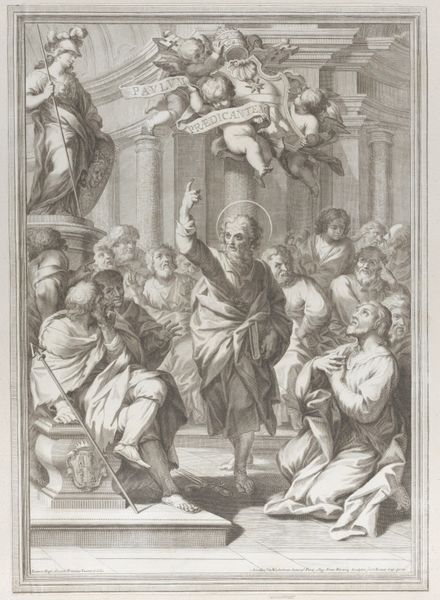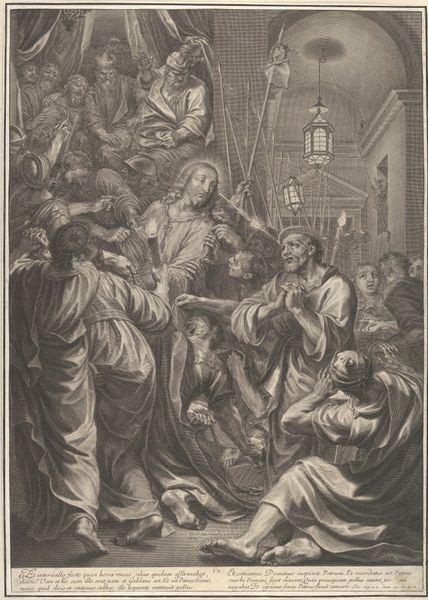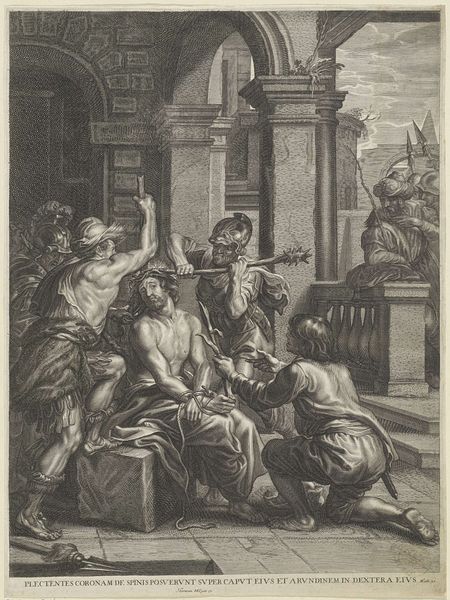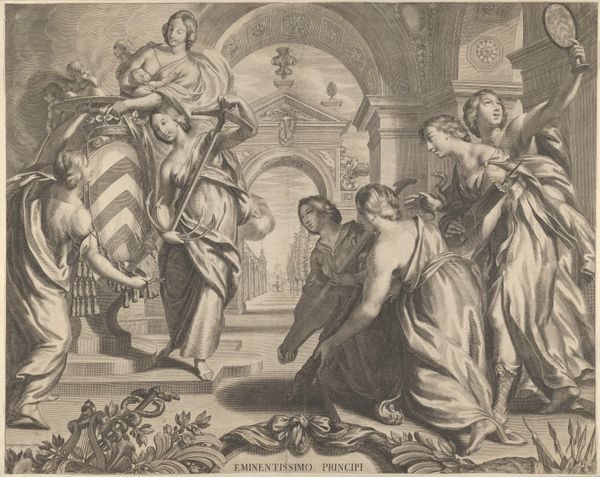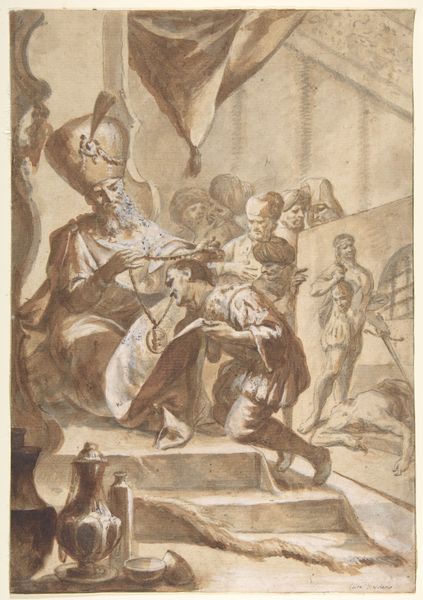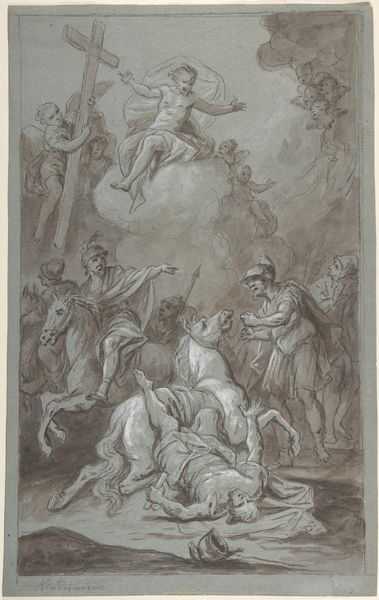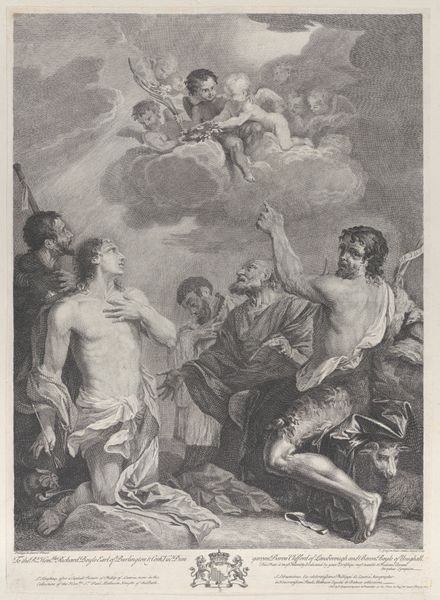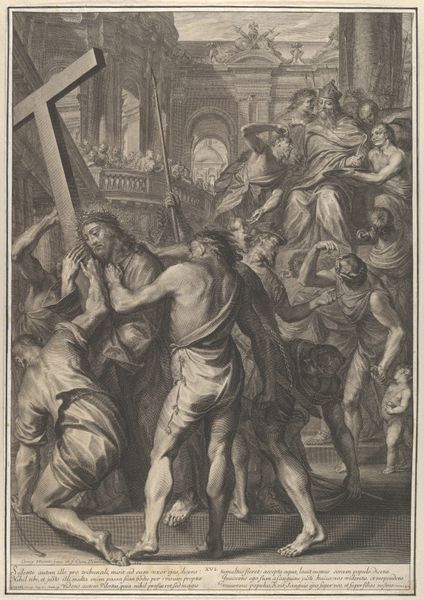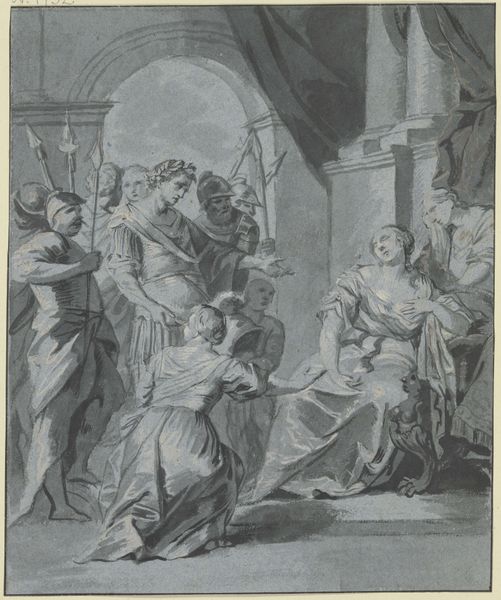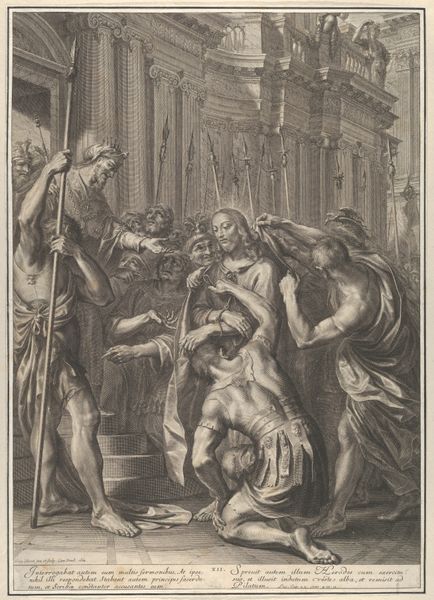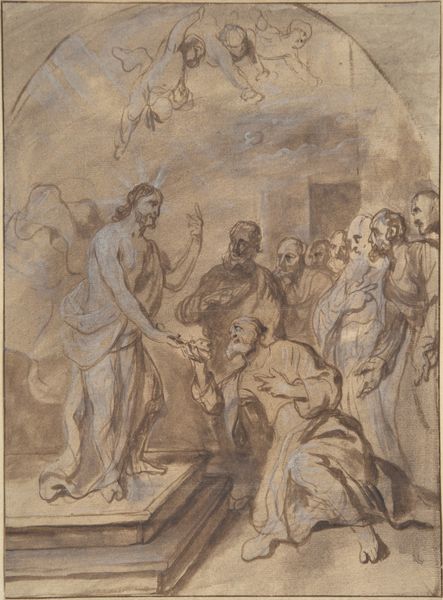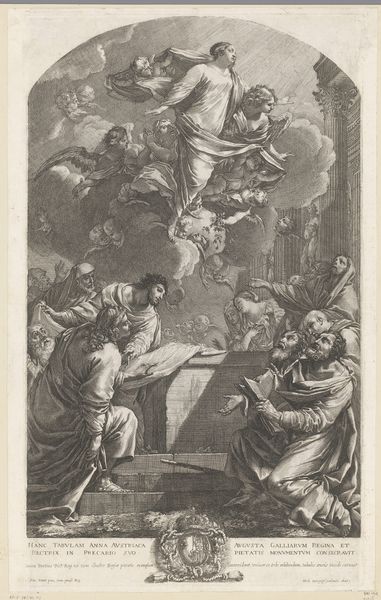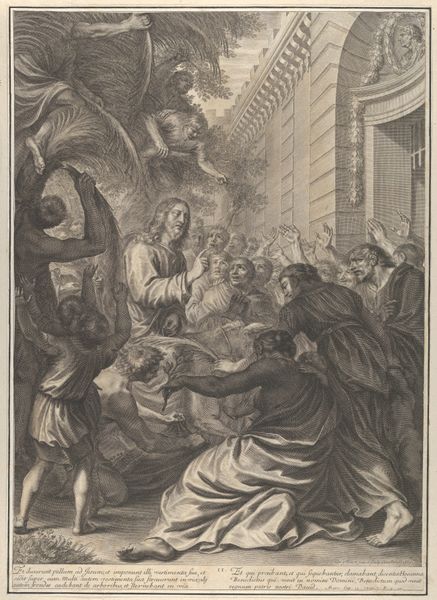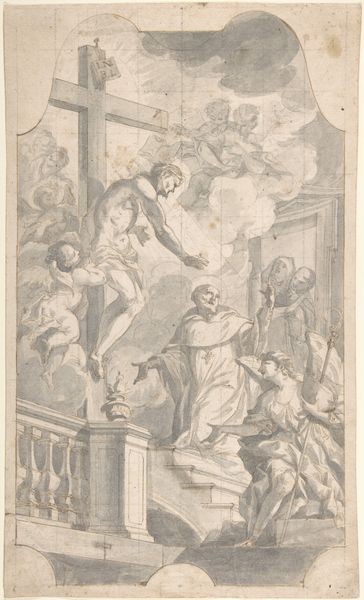
painting, oil-paint
#
allegory
#
baroque
#
painting
#
oil-paint
#
figuration
#
oil painting
#
history-painting
#
portrait art
Dimensions: 53 x 37.8 cm
Copyright: Public domain
Curator: Here we have Placido Costanzi's "A Miracle of Saint Joseph of Cupertino," dating back to around 1750, a remarkable piece executed in oil on canvas. Editor: My eye is immediately drawn to the light palette and how that luminous figure levitates. The theatrical expressions and gestures really set a dramatic, almost operatic tone. Curator: Indeed. Costanzi, working within the late Baroque style, was very much embedded in the artistic networks of Rome. This painting illustrates the documented levitations of Saint Joseph, showcasing the power of religious experience during that period. Its commission likely served to further enhance the saint's veneration, tying into the Church's efforts of popular education via the spectacular image. Editor: Looking closely, I’m fascinated by the materiality. You can see how the canvas texture interacts with the layers of translucent paint, especially in the robes. It’s interesting to consider the preparation of the canvas and the pigments available at the time. These artisanal materials speak volumes about the painter’s trade itself and the economies behind it. Curator: Precisely, the act of representing Saint Joseph’s levitation taps into very specific concerns. There were theological debates surrounding such miracles, the visual portrayal was used to both confirm belief and manage perceptions. Editor: The gazes and reactions in the onlookers show that emotional manipulation was key, almost engineered. It makes you wonder, where was this displayed? Who were the target audience of faithful that saw this scene presented before them, playing to wonder, and ultimately encouraging support for religious doctrine? Curator: Absolutely, these were important concerns as the Catholic Church navigated social influence through religious experience, during a period characterized by Enlightenment thought. Editor: I hadn’t quite considered this work in this historical context before. Analyzing these material elements and the environment really brings another perspective to my viewing experience. Curator: Likewise, your focus on the materiality of production sheds light on understanding the mechanics and the cultural purpose of religious art and history during a particular era. It has offered insights far beyond the depicted subject matter.
Comments
No comments
Be the first to comment and join the conversation on the ultimate creative platform.
